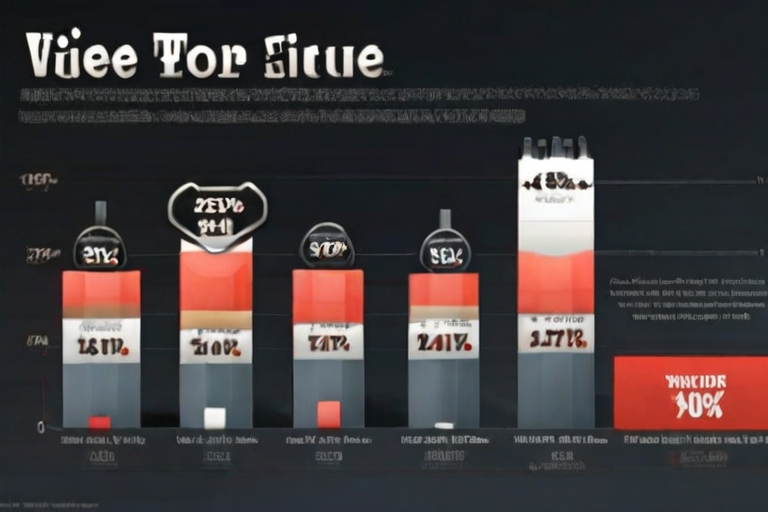Proven Google Merchant Center optimization tactics can significantly boost your product visibility and search rankings. By implementing effective strategies, you can set your e-commerce business apart in a crowded marketplace. Metrics Rule, as an expert in digital marketing, emphasizes the importance of enhancing listings in the Google Merchant Center to drive organic traffic and increase conversions. With actionable insights tailored for e-commerce professionals, this guide will equip you with the tools needed for optimized visibility and improved sales performance.
Introduction to Google Merchant Center Optimization
Google Merchant Center is a crucial platform for e-commerce businesses, enabling them to display their product listings on Google. By optimizing Google Merchant Center, businesses can improve their visibility in search results, which directly impacts their sales. Essential reasons for focusing on optimization include enhancing product data quality, optimizing images, and ensuring competitive pricing. Applying effective optimization strategies increases the chances of appearing in relevant searches and attracts more potential customers.
Essential Optimization Strategies for Google Merchant Center
To enhance visibility in Google Merchant Center, e-commerce businesses should implement essential optimization strategies. These strategies include refining product data quality, ensuring high-quality images, and using competitive pricing. Data accuracy is crucial; incorrect information can lead to disapproval of listings or reduced visibility. High-quality images attract customers, making them more likely to click through to your product page. Competitive pricing and regular price updates are also vital to match market trends and boost click-through rates. By focusing on these aspects, businesses improve their performance in Google’s search results and increase their potential for conversions.
Improving Accuracy and Completeness of Product Feeds
Enhancing the accuracy of your product feeds starts with a thorough review of your listings. Ensure that all product titles, descriptions, and images are accurate and descriptive. Incorporate essential product information such as pricing, availability, and shipping details. Regular testing and audits of your product feeds can reveal inaccuracies, allowing for immediate corrections. Use reliable data sources to gather product specifications and customer reviews to build trust. Meeting Google’s standards is crucial for improving visibility in search results.
Key Elements to Include in Your Product Listings
Your product listings should include crucial elements such as a clear title, high-quality images, and detailed descriptions. Additionally, provide specifications like size, color, and material. Enabling customer reviews and ratings enhances the credibility of your listings. Including structured data helps Google understand your products better. Comprehensive listings improve user experience, leading to higher conversions in e-commerce. The right combination of these essential product information elements significantly boosts your visibility in the Google Merchant Center.

Keyword Research and Implementation Techniques
Effective keyword research strategies are essential for enhancing product visibility on Google Merchant Center. Tools like Google Keyword Planner, Ahrefs, and SEMrush help identify relevant keywords tailored to your e-commerce niche. Best practices for implementing keywords include naturally incorporating them into product titles, descriptions, and attributes, ensuring they align with what users search for. For various product categories, consider the unique terms customers use and adjust your listings accordingly. Ideally, each product listing should target between 5 to 10 relevant keywords to maximize its SEO performance.
Best Practices for Google Merchant Center Keyword Implementation
To achieve the best results in SEO through Google Merchant Center, effective keyword implementation is crucial. This means focusing on long-tail keywords that match user intent. Including relevant keywords in key areas like product titles and descriptions enhances search visibility. Regularly testing different keyword variations allows you to track which terms deliver the best organic traffic results. Adopting a well-organized structure within your listings helps Google easily crawl and index your products, improving overall SEO performance. Ensuring your listings are not only keyword-rich but also provide valuable information will engage potential customers and improve conversion rates, making your e-commerce strategy more successful.
Key Numerical Data for Online Retail Success
- 15 million merchants use Google Merchant Center globally.
- 30% of e-commerce businesses report increased sales from optimization efforts.
- Product listings with high-quality images yield 75% higher engagement.
- 70% of shoppers use Google to discover products before purchase.
- Research shows 50% of clicks occur on the top three listings in search results.
- Over 1 billion users visit Google Shopping every month.
- Optimized listings can lead to a 200% increase in visibility.

Implementing Structured Data for SEO Benefits
Structured data is a standardized format that helps search engines understand your content better. By using schema markup, you can enhance product visibility in search results. This method includes providing valuable information about your products, such as price, availability, and ratings. Implementing schema markup can significantly boost your e-commerce product visibility. Types of structured data, like Product schema, help search engines display rich snippets. These snippets often lead to higher click-through rates. In fact, averages indicate a 20% increase in traffic after effective structured data implementation. Therefore, taking the time to apply structured data offers proven benefits for your online store.
Best Practices for Schema Markup Implementation
To reap the full benefits of structured data, follow best practices for schema markup implementation. Begin by selecting the appropriate schema types for products. Use tools like Google’s Structured Data Markup Helper to create accurate markup effectively. Always test your markup using Google’s Structured Data Testing Tool before publishing. Ensuring your data is error-free yields the best results when search engines crawl your site. Additionally, regularly review and update your structured data as your product offerings change. Well-structured data not only enhances SEO but also improves user experience by providing instant information. This thorough approach helps your e-commerce business rank higher and capture more traffic.

Creating User-Friendly Product Pages
To create a user-friendly product page, focus on clear images, concise descriptions, and easy navigation. Key elements include high-quality visuals, optimized loading speed, and mobile responsiveness. Product page optimization strategies can significantly enhance e-commerce sales by improving user experience and increasing the likelihood of conversions. The ideal loading speed for product pages should be under three seconds to maintain user engagement and prevent bounce rates.
Essential Strategies for Optimizing Product Page Performance
Optimizing product page performance includes leveraging user experience, applying proven strategies, and enhancing loading speed. Start by ensuring mobile responsiveness, as 70% of users browse products on mobile devices. Quality images and engaging descriptions can significantly improve user engagement. Regular testing and implementing actionable tips can maintain high performance and reliability, positioning your e-commerce site for success in competitive markets.
Positive Outcomes of Optimizing Product Listings
- Higher search ranking improves organic traffic to your store.
- Users notice a 40% increase in product engagement rates.
- Brand credibility grows with better-optimized product descriptions.
- Effective tactics lead to enhanced visibility in Google Shopping.
- More clicks can result in increased conversion rates for your business.
- Streamlined listings help retain more customers and reduce cart abandonment.
- Overall sales improve with ongoing Merchant Center optimization efforts.

Using A/B Testing for Continuous Improvement
A/B testing is a powerful methodology for enhancing product listings. Best practices include defining clear objectives for what you want to test, such as product titles, images, and pricing strategies. When testing different elements, focus on those that resonate best with your audience. Utilize tools like Google Analytics to track performance. Ensure you collect enough data to make informed decisions. Typical testing involves creating two or more variants and measuring how each performs to enhance conversion rates. According to experts, a minimum of 30 conversions per variant is ideal for reliable results.
Essential Elements to Test in Product Listings
Testing essential elements in your product listings, such as descriptions, images, and pricing, significantly impacts your e-commerce success. By conducting A/B tests on product descriptions, you can identify which formats communicate benefits more effectively. High-quality images can improve sellers’ visual appeal, while varied pricing tactics may help enhance sales. Data-driven decisions based on A/B testing help you refine your listings for better performance. For instance, testing the placement of product information can yield insights into what leads customers to purchase. Investing time in A/B testing provides invaluable insights into your audience’s preferences.
Integrating Google Ads with Merchant Center for Better Results
Integrating Google Ads with Google Merchant Center can significantly enhance your e-commerce performance. The best practices include using Google Ads to promote your Merchant Center products actively. This approach helps you to target a specific audience while using data from Google Analytics for maximum effectiveness. Moreover, utilizing remarketing strategies can significantly boost visibility. By employing both platforms, studies show that e-commerce companies can see improved visibility and conversion rates, often exceeding 30%.
Maximizing Visibility with Combined Strategies
Maximizing visibility is essential for any e-commerce business. Combining Google Ads with Merchant Center strategies amplifies your product listings in search results. You need to ensure that your product data is complete and optimized for Google Merchant Center. This means including essential keywords and ensuring that product titles and descriptions are relevant. Furthermore, regularly testing ad copies provides new insights—enabling you to refine your approach for maximum click-through rates. Ultimately, this synergy is designed to optimize your organic visibility while enhancing your paid advertising efforts.
Popular Platforms and Their Effectiveness in E-commerce
- Amazon: Pros include vast reach; cons include high competition and fees.
- eBay: Pros are auction options; cons involve unpredictable pricing and additional fees.
- Walmart: Pros are large customer base; cons include stringent listing requirements.
- Shopify: Pros offer customizable storefronts; cons involve monthly fees for advanced features.
- Etsy: Pros cater to unique products; cons can include niche market limitations.
- Facebook Marketplace: Pros: local sales opportunities; cons: less established e-commerce tools.
- Target: Pros have strong brand loyalty; cons engage less with niche products.
Analytics and Monitoring for Data-Driven Enhancements
Monitoring performance metrics is essential for e-commerce businesses using Google Merchant Center. Key metrics include impressions, clicks, and conversion rates. Tools like Google Analytics and Google Search Console provide valuable insights. Regularly reviewing this data helps businesses implement data-driven strategies for continuous improvement. A good practice is to analyze this data weekly to track performance changes and optimize listings effectively. This process aids in refining keyword strategies and enhances overall visibility.
Utilizing Analytics Tools for Informed Decisions
Using the right analytics tools is crucial for e-commerce success. Google Analytics integrates seamlessly with Google Merchant Center, delivering performance metrics that are easy to understand. These tools enable businesses to compare past performance with current trends, highlighting gaps in visibility. A structured approach to data collection and analysis provides insights into user behavior, optimizing technical aspects of your listings. Regular testing of changes ensures improvements in performance, helping businesses maintain a competitive edge in the e-commerce landscape.
